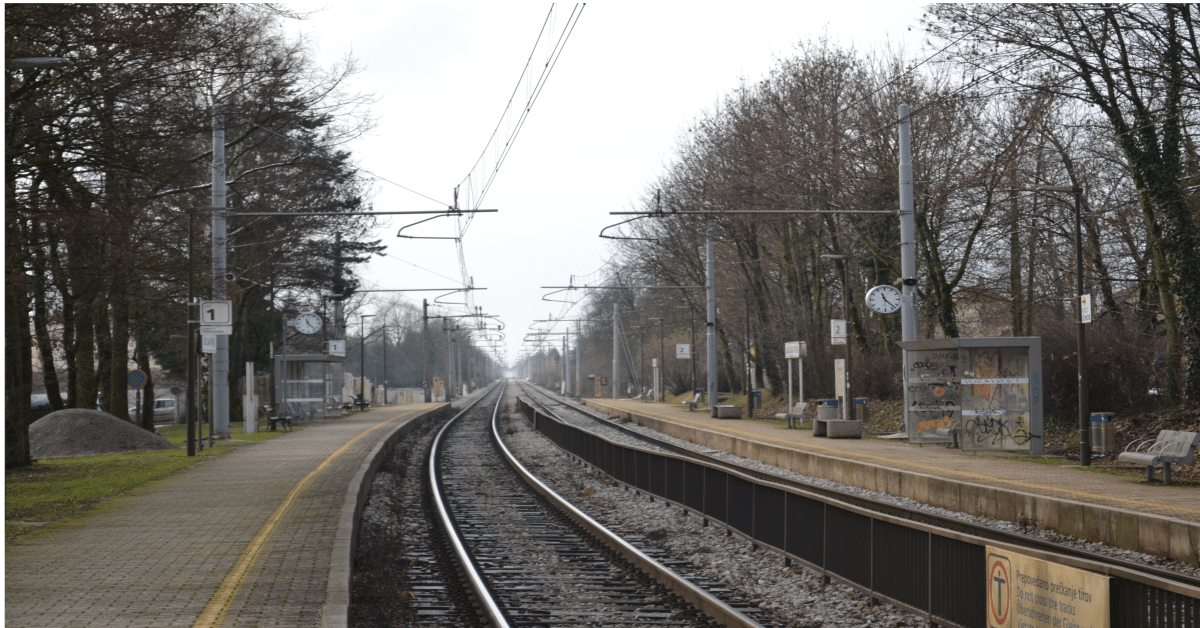On 27 February 2020, the Slovenian Government adopted the Integrated National Energy and Climate Plan of the Republic of Slovenia (NECP). This version of the NECP was already lacking ambition in four main areas. The target for reducing greenhouse gas emissions by 2030 of 36% by 2030 (compared to 2005) was not sufficient to limit global temperature rise to the necessary 1.5°C. The plan to use coal after 2030 and the planned investments in fossil fuel infrastructure were unacceptable, the proposed target of at least 27% renewables by 2030 was insufficient and the projected 12% increase in transport-related greenhouse gas emissions compared to 2005 was unacceptable and insufficient as well.
In April this year, a new draft scenario for the revison of the NECP was published as part of the first update of the NECP to be submitted to the Commission by 30 June 2024. A public consultation was held until 3 May 2023 in which Focus participated as part of the response of two networks, Plan B za Slovenijo (Plan B for Slovenia) and Mreža za prostor (Network for Spatial Planning). Although draft scenarios propose some improvements and additional measures, overall ambition is still lacking.
Unambitious objectives and insufficient public debate
Similar to the first version of the NECP, the currently presented scenarios in the draft update of the NECP do not take into account the actual scale of the environmental crisis. The scenarios are insufficient, in particular in four main areas:
- reducing greenhouse gas emissions, where an insufficient 37–40% reduction in greenhouse gas emissions by 2030 compared to 2005 is foreseen,
- in addressing the potential to reduce energy consumption and implementing the sufficiency principle, where both of the concepts are largely neglected in the current document of the updated NEPC,
- in objectives regarding renewable energy sources and the role of communities in energy transition, where Slovenia needs to significantly increase the currently foreseen renewables target (30–35%), remove administrative barriers to the implementation of community energy projects and set up a systemic mechanism for permanent administrative and financial support, and
- in measures regarding transport, where the projected 5% increase in transport-related greenhouse gas emissions compared to 2005 is unacceptable and insufficient.
While the public hearing process itself was well conducted, our main criticism is the lack of consideration given to our comments and suggestions. We made several substantiated comments in the first part of the consultation that were not taken into account either in the discussion or in the draft itself. The online questionnaire failed to cover all the content relevant for the basis of the NECP update and did not allow the key assumptions of the document to be questioned. For example, the document assumes growth in the production of energy-intensive products (cement, paper, steel, chemicals, etc.) by 2050 and thus in the final energy consumption. This trend, which is in the forefront of most of the document, is environmentally unsustainable, makes it more difficult to pursue climate goals and does not lead us towards a society based on sufficiency.
The proposed objectives to reduce greenhouse gas emissions by 2030 are insufficient
In its latest report, the IPCC concludes that the 1.5°C target is still achievable, but the time to act is quickly running out. In this context, the current national and EU objectives are insufficient. In line with the IPCC warnings, and taking into account its historical responsibility and capacity to act, the EU should reduce its emissions by at least 65% by 2030 compared to 1990. The scenarios in the draft update of the NECP foresee a 37–40% reduction in greenhouse gas emissions by 2030 compared to 2005. This is not in line with the scientific findings and the Paris Agreement and is not enough to limit the rise of global temperature to 1.5°C.
The objective to reach climate neutrality by 2050 is also profoundly inadequate. Historically speaking, the EU countries bear a greater responsibility for climate change impacts and have at the same time a greater capacity to act. In line with the UNFCCC Convention on common but differentiated responsibilities, they must therefore act faster and more ambitiously than other countries and reach carbon neutrality earlier than countries that do not have the same possibilities to act and have also contributed less to the problem. In this context, Slovenia should achieve climate neutrality by 2040.
Need for stronger focus on reducing energy consumption and implementing the sufficiency concept
Reduction of energy consumption and the sufficiency concept are largely neglected in the current document of the updated NECP. While energy efficiency relies more on technological solutions and the associated risks, sufficiency focuses more on the use of energy, goods and services by end users and examines how to reduce these needs to a minimum level that ensures well-being while keeping society within the parameters of planetary boundaries. This includes measures such as encouraging the purchase of second-hand equipment, servicing products and labelling servicing options, renting instead of owning, etc. However, in addition to encouraging good practices, it is also necessary to tax (and ban) practices with a high carbon and ecological footprint.
Achieving more ambitious targets by 2030 is only possible by reducing energy consumption. According to scientific findings and in order to achieve decarbonisation in line with the Paris Agreement, this reduction should be far bigger than the currently foreseen new EU targets, i.e. at least 20% compared to the 2020 reference scenario. Therefore, the NECP scenarios need to be complemented with a sufficiency scenario that must evaluate the minimum amount of services and goods necessary to ensure the prosperity of society (and eliminate the growing social inequalities) and estimate how reduced consumption affects the consumption of energy and raw materials in the supply chains in all relevant sectors (energy, transport, industry, agriculture, general use, waste management). Such a scenario can give us an insight into the actual possibilities to reduce energy consumption and greenhouse gas emissions in Slovenia.
The renewables objectives are insufficient. More emphasis on community energy projects is needed
It will be crucial for Slovenia to supercharge the deployment of solar and wind energy, by 2030, as we are at the tail-end of EU countries in terms of newly installed solar and wind generation capacities. Updated version of The Paris Agreement Compatible (PAC) Scenario prepared for the EU area by CAN Europe, EEB, REN21 and Renewables Grid Initiative include a much higher objective (50%) than the one adopted at the EU level (42.5%). Therefore, Slovenia also needs to significantly increase the currently foreseen renewables target (30–35%). In terms of energy end-use, the renewables objectives will be much more implementable in the context of more ambitious measures for reducing the overall energy consumption, in particular in the transport and industry sectors, where the potential to reduce energy consumption are very high.
Of the three scenarios envisaged in the current draft of the NECP, Focus supports only the 100% renewables scenario without new large hydro power plants, as the construction of new hydro power plants would have a significant negative impact on the environment, while there are more suitable and cheaper alternatives (solar and wind energy). Prioritising renewables in electricity generation requires ensuring that renewables are located in a strategic way, taking into account the conservation categories. Primarily, areas where there is no significant opposition to renewables (in particular solar energy) should be exploited, both from the point of view of efficient use of space, as well as of exhausting existing spare capacity on the transmission and distribution network and of directing investors to suitable sites.
When focusing on renewables, we must make sure that community energy projects play an essential role by removing administrative barriers to the implementation of such projects and by setting up a systemic mechanism for permanent administrative and financial support for community energy projects. These projects are of paramount importance, as they enable the inclusion of the energy poor in clean energy provision, thus having positive effects on local communities. Such measures make it possible to pursue the objectives of a faster and ambitious green transition, while at the same time systemically addressing energy poverty and other social inequalities.
Fast action in the transport sector is urgently needed
In Slovenia, transport is the sector with the highest greenhouse gas emissions (32% of total emissions and 50% in the non-ETS sector) and the highest share of energy end-use (38%). The draft update of the NECP proposes three scenarios for transport. At Focus, we are in favour of measures that are based on demand management (scenario 3), as transport is a sector where we have not been successful in attaining the set objectives and where broader and faster action is necessary. Demand management is a new approach to transport in Slovenia (moving away from demand satisfaction) and has only recently been coming to the forefront with the implementation of the principles of integrated transport planning. The submission also says that the state will support cities in reducing car traffic by proposing measures such as reducing the number of working days, lowering the speed limit, building infrastructure to improve public transport, etc.
Nevertheless, the current documents still show a low level of ambition in terms of reducing motorised traffic, increasing the use of public transport and reducing dependence on the private car.
Among the measures set out in the new NECP we would like to see more effective actions taken in the very first decade (by 2030). Many measures that are already feasible now are unnecessarily proposed for the 2030–50 period (e.g. a charge for entering cities -alongside the development of public transport- which we could already start using to tackle air pollution). For a successful decarbonisation of transport, we advocate the simultaneous construction of three pillars:
1. Efficient energy use (with electrification as the most efficient measure, higher vehicle occupancy, optimisation of routes) and reduction of motorised transport activity as we know it today (through innovative practices, integration with spatial policy, fiscal policy, etc.);
2. Sustainable mobility measures (walking, cycling, efficient public transport, multimodality, freight transport by rail);
3. Alternative fuels (in road transport, direct electrification is particularly effective. Upgrading and replacing the fleet of buses powered by fossil gas, diesel and petrol with electric buses is important).

Slovenia is expected to submit its NECP draft to the European Commission by the end of June 2023. We demand that the comments and recommendations of the broad coalition of environmental and spatial NGOs will be duly taken into account in the draft revised NECP. In order for Slovenia to achieve climate neutrality by 2030, it is essential to substantially strengthen the target for reducing greenhouse gas emissions by 2030. More ambitious target by 2030 is possible, but only on the basis of significantly reduced and more efficient energy use and a higher share of energy from renewable sources, especially solar and wind. A comprehensive 100% RES scenario with no new large-scale HPPs should be prepared, based on an additional sufficiency scenario, i.e. a scenario of reduced energy and resource needs to a level that still ensures societal well-being while keeping society within the parameters of planetary boundaries.
Download necps report — march 2023
PREVIOUS
NEXT

